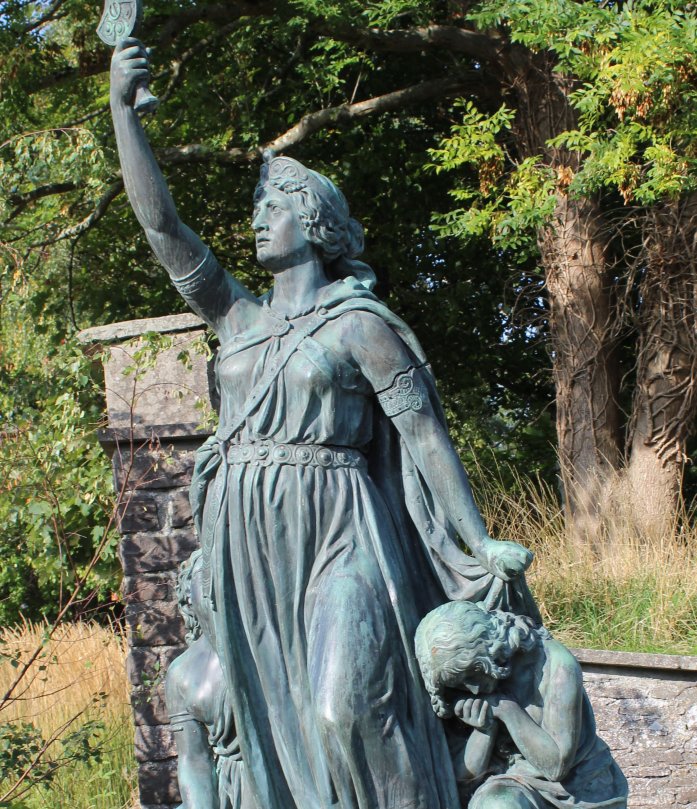The Iceni’s Queen Boudicca Who Revolted Against Roman Rule
A. Sutherland - AncientPages.com - The Iceni people were British Celts who occupied the area of modern Norfolk, Cambridgeshire, and northwest Suffolk. The tribe represented a significant power in eastern Britain during Claudius' conquest of Britain in 43 AD.
1855 Bronze statue of Boadicea (Boudica) and her daughters, at Captain's Walk in Brecon, Powys, Wales; by sculptor John Thomas. Image credit: 14GTR - CC BY-SA 4.0
In 47 AD, the Iceni rose in revolt after the Romans tried to enforce a law forbidding the carrying of weapons and increasing Roman influence on the tribe's affairs; their protest was put down, and Prasagustas was established as a client king.
Prasutagas decided that it would be wise to make his will assigning half of his personal property to the Roman emperor, and so it remained. However, when he died in 61 AD, the situation changed. The king's will was ignored, and the kingdom was annexed.
Boudica, Prasutagas's widow and queen of the Iceni tribe, was publicly flogged, her daughters raped, and the estates of the most prominent Iceni men were confiscated. In 61 AD, Boudicca raised the Iceni and the neighboring Trinivantes tribe in revolt against Roman rule.
She destroyed the invaders and chose Londinium as a critical target for her uprising. On her way to Londinium (modern London), Boudica and her army destroyed Camulodunum (modern Colchester), at that time a settlement for discharged Roman soldiers and the site of a temple to the former Emperor Claudius.
Boudicca's treatment of her enemies was brutal, and she must have given the Romans a terrific scare. One legion was so terrified that they refused to move against her. When the Iceni reached Londinium, they pillaged and burned down the city, killing all remaining inhabitants.
At first, the authorities could not prevent the Boudican revolt's advance. Upon hearing of the uprising, Governor Gaius Suetonius Paulinus hurried from the island of Anglesey off the northwest coast of Wales to Londinium to save the city. However, due to the lack of sufficient forces, he could not. He instead decided to sacrifice the single city of Londinium to save the entire province and gave the signal to abandon the city as soon as possible.
The inhabitants were allowed to accompany him. Only women, old or attached to the place, stayed in the city. An estimated 70,000–80,000 Romans and British were killed in the three towns by those led by Boudica. Suetonius, meanwhile, regrouped his soldiers and, despite being heavily outnumbered, defeated the Britons at the Battle of Watling Street.
The Roman historian Tacitus (56 AD – 117 AD) wrote about what Suetonius told his men before the fight:
"Ignore the racket made by these savages. They are not soldiers - they're not even properly equipped. There are more women than men in their ranks. We've beaten them before, and when they see our weapons and feel our spirit, they'll crack. Stick together. Throw the javelins, then push forward: knock them down with your shields and finish them off with your swords. Forget about plunder. Just win, and you'll have everything."
It was only with some difficulty that the Romans quelled the Iceni uprising. Londinium, the thriving port growing on the banks of the River Thames, was left in ruins. At first, Boudicca's fate was unknown, but later, people began to believe that she took her own life by taking poison rather than falling into her enemies' hands.
The Romans established a new capital in the Iceni lands at Caistor-by-Norwich. No record of the Iceni exists after this point, though legends suggest that many fled west into Wales and eventually settled in Ireland.
By the Middle Ages, Boudica was forgotten. She was not mentioned in "Historia Brittonum" by Venerable Bede, the earliest prose stories "Mabinogion' or Geoffrey of Monmouth's 'History of the Kings of Britain.'
There is a tendency to think of Boudicca as a great patriotic leader of the British, perhaps the first national heroine.
Many others do not consider her particularly appealing character.
Written by – A. Sutherland - AncientPages.com Senior Staff Writer
Updated on August 21, 2024
Copyright © AncientPages.com All rights reserved. This material may not be published, broadcast, rewritten or redistributed in whole or part without the express written permission of AncientPages.com
Expand for referencesReferences:
R. Hingley, Boudica: Iron Age Warrior Queen
Charles River Editors. Londinium
More From Ancient Pages
-
 On This Day In History: Parachute Jump From 1,000 m Above Paris Is Recorded – On Oct 22, 1797
News | Oct 22, 2016
On This Day In History: Parachute Jump From 1,000 m Above Paris Is Recorded – On Oct 22, 1797
News | Oct 22, 2016 -
 Unexplained Phenomena Witnessed Around Mysterious Ancient Stone Structures In New York – Can A Sacred Native American Mountain Offer Clues?
Featured Stories | Nov 3, 2024
Unexplained Phenomena Witnessed Around Mysterious Ancient Stone Structures In New York – Can A Sacred Native American Mountain Offer Clues?
Featured Stories | Nov 3, 2024 -
 On This Day In History: Admiral John Byng Charged With ‘Failing To Do His Utmost’ – Executed – On Mar 14, 1757
News | Mar 14, 2017
On This Day In History: Admiral John Byng Charged With ‘Failing To Do His Utmost’ – Executed – On Mar 14, 1757
News | Mar 14, 2017 -
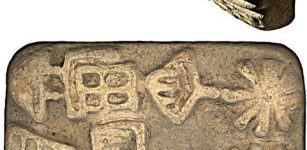 Royal Inscription Of Naram-Sîn Of Akkad: The First Ancient King To Use Blocks For Printing Bricks
Artifacts | Jul 28, 2016
Royal Inscription Of Naram-Sîn Of Akkad: The First Ancient King To Use Blocks For Printing Bricks
Artifacts | Jul 28, 2016 -
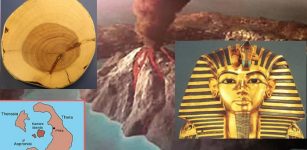 Radiocarbon Dating Method Needs Adjustments – Researchers Say
Archaeology | Apr 1, 2020
Radiocarbon Dating Method Needs Adjustments – Researchers Say
Archaeology | Apr 1, 2020 -
 Mystery Of The Artificial Cave And Ancient Encounters With Short People With Strange Feet
Ancient Mysteries | Mar 20, 2025
Mystery Of The Artificial Cave And Ancient Encounters With Short People With Strange Feet
Ancient Mysteries | Mar 20, 2025 -
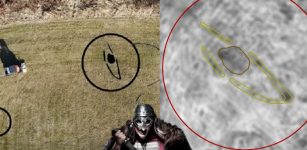 New Huge Viking Ship Discovered By Radar In Øye, Norway – What Is Hidden Beneath The Ground?
Archaeology | Apr 9, 2022
New Huge Viking Ship Discovered By Radar In Øye, Norway – What Is Hidden Beneath The Ground?
Archaeology | Apr 9, 2022 -
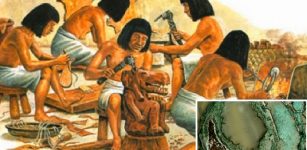 What Ancient Civilization Discovered Metallurgy?
Ancient Technology | Sep 19, 2017
What Ancient Civilization Discovered Metallurgy?
Ancient Technology | Sep 19, 2017 -
 Morrígan: Shape-Shifting Phantom Queen And Her Meeting With Irish Hero Cuchulainn
Celtic Mythology | Aug 7, 2017
Morrígan: Shape-Shifting Phantom Queen And Her Meeting With Irish Hero Cuchulainn
Celtic Mythology | Aug 7, 2017 -
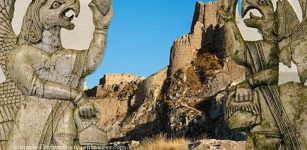 Ancient Settlement Inhabited By Urartian People – Unearthed
Archaeology | Oct 13, 2020
Ancient Settlement Inhabited By Urartian People – Unearthed
Archaeology | Oct 13, 2020 -
 525-Million-Year-Old Fossil Defies Textbook Explanation For Brain Evolution
Archaeology | Nov 25, 2022
525-Million-Year-Old Fossil Defies Textbook Explanation For Brain Evolution
Archaeology | Nov 25, 2022 -
 Witch Of Endor – A Biblical Ghost Story Or A Woman With Supernatural Powers?
Featured Stories | Jul 9, 2021
Witch Of Endor – A Biblical Ghost Story Or A Woman With Supernatural Powers?
Featured Stories | Jul 9, 2021 -
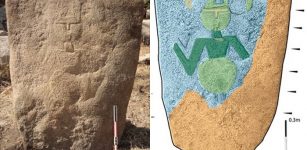 Unique Balchiria Stelae Engraved With A Goat-Like Figure Found On Corsica Is A Puzzle
Featured Stories | Feb 3, 2020
Unique Balchiria Stelae Engraved With A Goat-Like Figure Found On Corsica Is A Puzzle
Featured Stories | Feb 3, 2020 -
 Humans Survived A Covid-19-Like Pandemic 25,000 Years Ago
Human Beginnings | Nov 23, 2020
Humans Survived A Covid-19-Like Pandemic 25,000 Years Ago
Human Beginnings | Nov 23, 2020 -
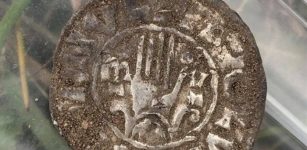 Hoards Of Viking Coins Discovered On The Island Of Saaremaa
Archaeology | Oct 7, 2019
Hoards Of Viking Coins Discovered On The Island Of Saaremaa
Archaeology | Oct 7, 2019 -
 Perfectly Preserved Roman Tombs Discovered Near City Of Capua Where Spartacus Trained As Gladiator
Archaeology | Jan 7, 2021
Perfectly Preserved Roman Tombs Discovered Near City Of Capua Where Spartacus Trained As Gladiator
Archaeology | Jan 7, 2021 -
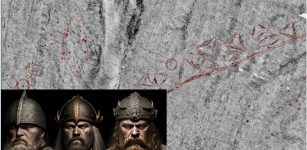 Radar Discovery Of Unknown Viking Age Stone Ship, Burial Mounds And Houses In The Trondheim Fjord
Archaeology | Mar 28, 2023
Radar Discovery Of Unknown Viking Age Stone Ship, Burial Mounds And Houses In The Trondheim Fjord
Archaeology | Mar 28, 2023 -
 Unique Glimpse Into The Secrets Of Mysterious Ancient Egyptian Manuscripts And Sacred Tablets Deliberately Hidden From The Outside World
Featured Stories | Dec 29, 2024
Unique Glimpse Into The Secrets Of Mysterious Ancient Egyptian Manuscripts And Sacred Tablets Deliberately Hidden From The Outside World
Featured Stories | Dec 29, 2024 -
 Future Of Thornborough Henges Secured – Stonehenge Of The North Preserved For The Nation
News | Feb 3, 2023
Future Of Thornborough Henges Secured – Stonehenge Of The North Preserved For The Nation
News | Feb 3, 2023 -
 Incredibly Rare 3,500-Year-Old Wooden Spade Found In English Trench
Artifacts | Oct 30, 2024
Incredibly Rare 3,500-Year-Old Wooden Spade Found In English Trench
Artifacts | Oct 30, 2024

